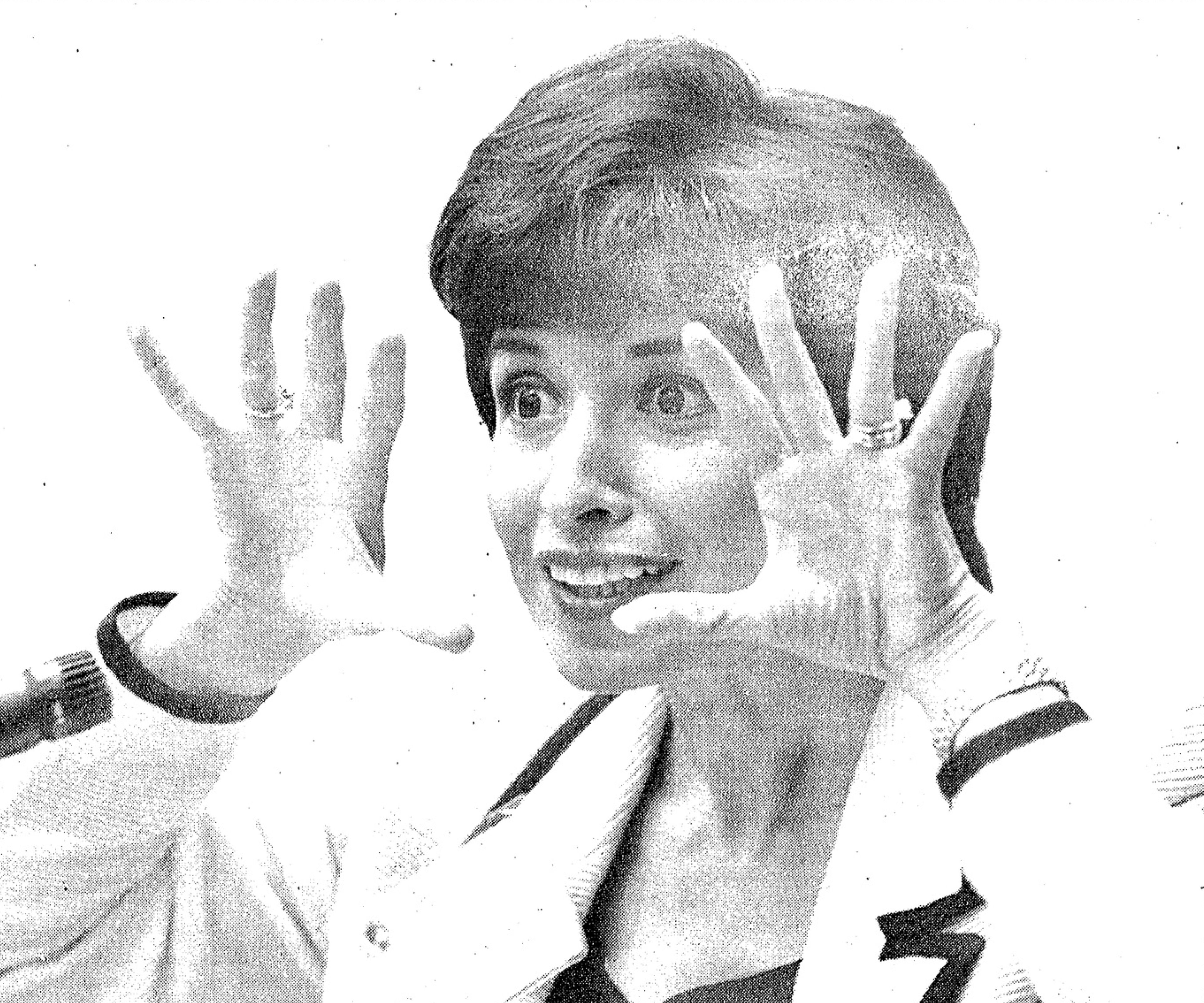FROM THE ARCHIVES: CBS reporter and Nez Perce tribal member tells LCSC audience of the un-democracy of TV journalism
Hattie Kauffman visited LCSC in 1994
Kauffman's speech at Lewis-Clark State College took place Oct. 14, 1994. This story was originally published in the Tribune the following day.
Before CBS correspondent Hattie Kauffman came to Lewiston for the International Exchange Conference, she told her producer in New York she was giving a lecture on multiculturalism and journalism.
"He said, 'That's an oxymoron,'" Kauffman told her audience of Lewis-Clark State College staff and students Friday morning.
Kauffman, born in Grangeville and a member of the Nez Perce Tribe, said that although minorities are making some inroads into broadcast journalism, there are still few being hired into positions of power.
"Television is one area where there's not democracy," Kauffman said, recalling one woman who was "let go because she was not deferential enough to the male anchor."
"Who you are, how you look and even what race you are can play a part."
Kauffman was a reporter for "Good Morning America" for three years and currently is the consumer affairs correspondent for CBS This Morning and a frequent substitute for the show's co-anchor, Paula Zahn.
Friday she was one of three panel members who spoke about broadcast journalism from a minority perspective.
Kauffman told of one instance a few years ago when her agent informed her a station in Boston was looking for a minority female news anchor. Interested, Kauffman sent a tape of herself.
"They liked it and they were psyched and were going to hire me. They called and said, 'So, she's Hispanic, right?' And he said, 'No, she's American Indian,' and the station in Boston said, 'Is that a minority?'"
Television broadcasting is a visual medium in which hairstyles, clothing and the set are important, Kauffman explained. The emphasis on image is one reason the recent increase in minority anchors has been criticized as "window dressing on the set," Kauffman said.
"You put a face of color in here and that might satisfy a percentage of the audience," she said.
Although the number of minority anchors is increasing, most editorial decisions still are made by whites, she said.
"What hasn't happened enough is the hiring of minorities into positions where they can have an impact on what goes on or off the air."
But Kauffman's Nez Perce presence on the staff has led to several stories for the networks that might not have surfaced otherwise.
During a routine telephone chat a few years ago, her sister told her about the Lapwai basketball team's 60-game winning streak. Kauffman, working at Good Morning America at the time, decided the small town team on an Indian reservation in Idaho might make a good story.
"ABC bought it, and they sent us out here and that would never have happened if you hadn't had an American Indian on the staff, let alone a Nez Perce who knew Lapwai," she said.
During the Gulf War, Kauffman did a story about a Fort Bragg man whose wife was a soldier and had gone to war, leaving him to take care of the household and children.
"He was a police officer, so he would go to work in his uniform in the morning and then run home at lunch to do laundry and make his son a peanut butter sandwich," she recalled. After the story ran, her producer praised the piece, which featured a black man in the positive role of "Mr. Mom."
Too many news stories cast minorities in negative lights, Kauffman said, stereotyping the Japanese as invaders of business, Hispanics as illegal aliens and blacks as rap stars, drug addicts and welfare mothers.
"I was a little Indian girl here and my vision of Indian femaleness was either the grandma, and I love my grandma, who made fry bread and wore a shawl and walked slowly, or it was that sexy little Sacajawea neon thing that lit up," she said, referring to the former Sacajawea Motel sign.
"I can just imagine the harm that could be done to little boys who only see their male role models in handcuffs."








